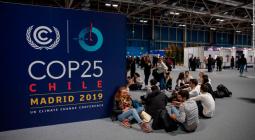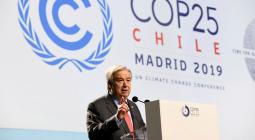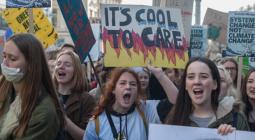How COP25 is Being Made Sustainable.
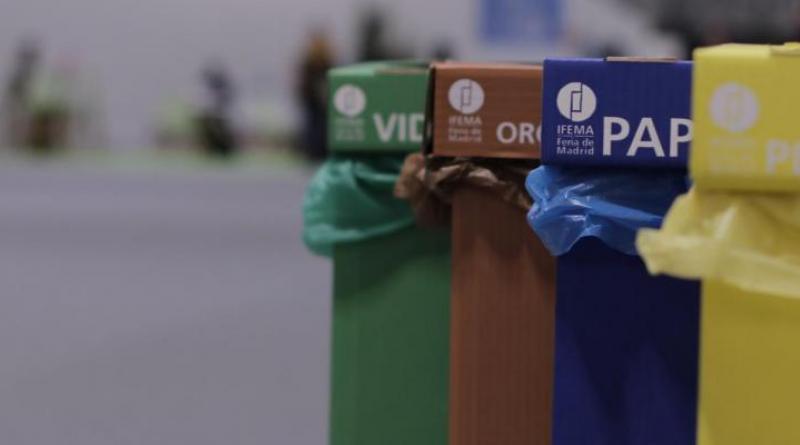
The UN Climate Change secretariat, the Chilean government and the Spanish government are working together to make COP25 (2 – 13 December) in Madrid, Spain, as sustainable and climate-friendly as possible. This commitment comes on top of the enormous challenges the organizers have been facing with the relocation of such a major event at such short notice.
The event is to be entirely climate neutral, with the priority of the organizers being to avoid greenhouse gas (GHG) emissions to the greatest extent possible. Unavoidable GHG emissions will be offset through the purchase and cancellation of UNFCCC recognized offsets from projects benefiting local communities in impoverished areas.
All resources will be used responsibly and efficiently. Waste production, water and energy use will be reduced or avoided wherever possible, and materials will be reused or sorted and recycled where possible.
COP25 participants will also contribute towards climate action with the Region of Madrid planting trees in their names.
Sustainable transportation
To encourage travel to the COP by train, the Spanish railway company, RENFE, is offering a 35% discount for Conference participants.
Local mobility is also an important source of emissions. However, the conference venue is easily accessible via local public transport (metro and buses) and these will be used as much as possible, particularly for travel between the main hotels and the Conference venue. Local public transport is free for conference participants.
Reporting and offsetting unavoidable GHG emissions
Unavoidable GHG emissions associated with COP25 will be documented in a carbon footprint report prepared by the host country, Spain, to be published next spring.
These emissions will be compensated by removing the equivalent amount of CO2 through Certified Emission Reductions (CERs) of the Clean Development Mechanism (CDM). The CERs will be used to compensate for the travel of all registered participants to Madrid.
In addition, the UN’s Climate Neutral Now initiative offers organizations, companies and individuals the possibility to compensate the carbon footprint generated by their personal activities not related to COP25 by purchasing UN-certified offsets.
Participants who compensate their emissions through the platform will automatically receive a personalized certificate from the UN Climate Change secretariat to attest to their climate action, as well as – at the time of registration – a Climate Neutral Now lanyard.
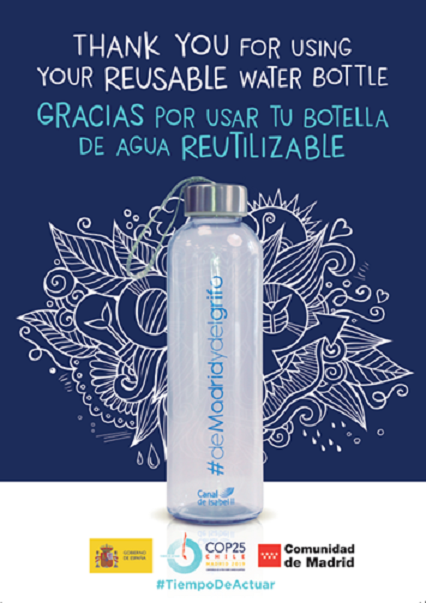
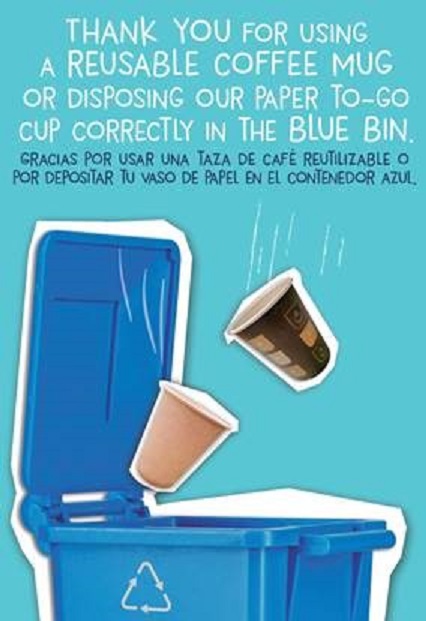
Waste management
The sustainable management of waste is crucial to making a major event like COP25 climate-friendly. To achieve this goal, waste will be separated into different categories at origin and transported to the relevant treatment plant. Spain has worked on the design of pictograms for the correct disposal of the waste in the different waste bins. The categories/colour codes for the different types of waste are:
- Yellow: Packaging
- Blue: Cardboard/paper
- Brown: Organic
- Green: Glass
- Raw cardboard: Other
The companies providing catering services have prioritized reusable cutlery, plates and cups and, when not possible, made from compostable materials. Compostable packaging material will be used in the grab-and-go-areas. All bags in the catering areas are made of paper and paper napkins are made from ecological paper. The Conference organizers are committed to providing mainly local (65-70% vegetarian) food during the COP.
A complimentary welcome kit is provided to Conference delegates and includes a reusable glass bottle that can be refilled at the water fountains available throughout the venue, free of charge. This will significantly limit the use of disposable plastic bottles and paper or plastic cups.
To further reduce the amount of waste produced, the materials used for the set-up of the conference site, including the equipment and decoration of spaces such as offices and pavilions, will be reusable to the greatest extent possible.
In the backstage areas at the venue, containers are available for the differentiated collection of materials generated in the assembly/dismantling of the pavilion, such as cardboard, wood and plastic. The textile material of the pavilions, including carpets and acoustic insulation fabric, will be reused for other events. All electrical material will also be recycled.
The Conference venue has humidity and temperature meters at the entrance to each pavilion and the temperature is kept at a constant 21 degrees. LED lighting will be used in the pavilion.
Paperlight conference
To reduce paper use, all official documents are available in digital format and participants are able to download them from the UNFCCC website.
Staff at the Documentation Services Counter can help participants to locate and access documents online via screens at the Counter, computers provided at computer centres or participants’ own laptops or other handheld devices. The Daily Programme is available as an electronic version only.
Participants are encouraged to print and photocopy only what is unavoidable prior to and during the sessions. The number of pages for printing in a single session and the number of sessions available to any given user at the computer centres is limited, with double-sided printing as the default option.
An important new feature to reduce the use of paper at COP25 are digital exhibit stands, which replace the traditional exhibition space.
Virtual participation
Virtual participation options for COP25 include live broadcast of all official side events. Links to the broadcasts are available on the UNFCCC website. More information on virtual participation options can be found here.
5 December 2019
UN Climate Change News

